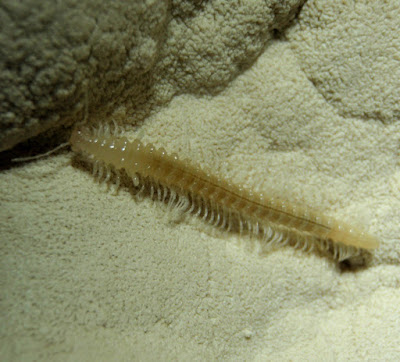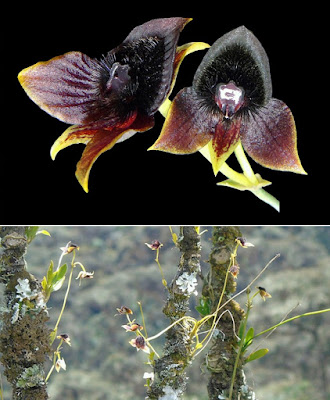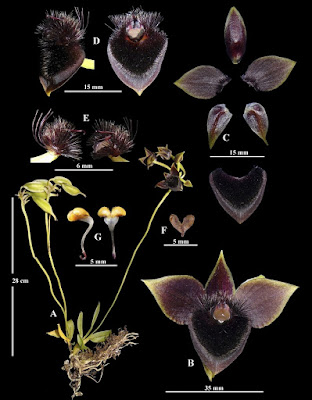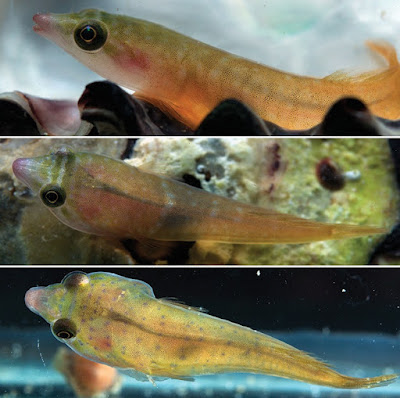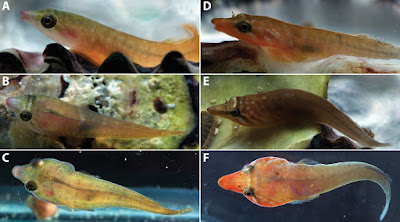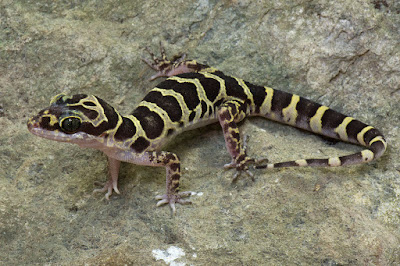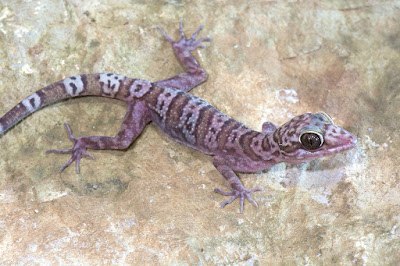[Most Recent Entries] [Calendar View]
Sunday, March 4th, 2018
| Time | Event | ||||||||
| 2:01a | [Crustacea • 2018] Monomia lucida • A New Swimming Crab (Decapoda: Portunidae) from the South China Sea
Abstract A new species of the portunid genus, Monomia Gistel, 1848, is described from the South China Sea in Vietnam. Monomia lucida sp. nov. is morphologically most similar to M. argentata (A. Milne-Edwards, 1861), which was originally described from Sarawak, on the island of Borneo. In addition to the stout, forward-directed anterolateral teeth of the carapace, the subrectangular sixth segment of the male pleon, and the long and slender laterally bent first gonopods, adults of the new species reach a greater size, and can also be distinguished from M. argentata by the colour pattern on the natatory dactylus. The independent specific status of M. lucida sp. nov. is also supported by molecular evidence. Aside from a comparison of this new species with other known congeners, new photographs of the holotype of M. samoensis (Ward, 1939) are also provided. Keywords: Crustacea, Brachyura, new species, portunid crab, Vietnam Milan Koch and Zdeněk Ďuriš. 2018. Monomia lucida sp. nov., A New Swimming Crab (Crustacea: Decapoda: Portunidae) from the South China Sea. Zootaxa. 4387(3); 567–579. DOI: 10.11646/zootaxa.4387.3.9 | ||||||||
| 2:18a | [Diplopoda • 2018] Heterocaucaseuma deprofundum • The World's Deepest-occurring Millipede (Chordeumatida, Anthroleucosomatidae) from Caves in the western Caucasus
Abstract We describe a new anthroleucosomatid millipede, Heterocaucaseuma deprofundum sp. nov., found in the second and third deepest caves of our planet, Krubera-Voronja and Sarma, in Abkhazia, western Caucasus. A brief discussion on its taxonomy and relationships within the Caucaseuma complex and genus Heterocaucaseuma is provided, together with new faunistic records on other three species of Heterocaucaseuma. Notes on the distribution and troglomorphy of the genus Heterocaucaseuma are added. Ecological information and data on the subterranean community of the Krubera-Voronja Cave are updated. We also discuss the vertical distribution of the new species in caves and the presence of an ectoparasitic fungi of the order Laboulbeniales. This new species is currently the world's deepest-occurring millipede, also representing one of the largest known chordeumatidans. Keywords: Myriapoda, Anthroleucosomatidae, Heterocaucaseuma, new species, caves, Krubera-Voronja, Sarma, Abkhazia Dragan Ž. Antić, Ilya Turbanov and Ana Sofia Reboleira. 2018. From the Depths: Heterocaucaseuma deprofundum sp. nov., the World's Deepest-occurring Millipede (Diplopoda, Chordeumatida, Anthroleucosomatidae) from Caves in the western Caucasus. Zootaxa. 4377(1); 110–124. DOI: 10.11646/zootaxa.4377.1.7 Deepest-living millipede ever discovered found by Portuguese biologist theportugalnews.com/news/deepest-living-m | ||||||||
| 2:36a | [Botany • 2018] Telipogon jucusbambae • the Rediscovery of A Marvelous Telipogon (Orchidaceae) from Peru
Abstract Telipogon jucusbambae, a Peruvian endemic species, is rediscovered and its distributional range greatly extended. The species was known from a single collection made more than 50 years ago. A description, images of living specimens, a distribution map, and taxonomic comments on related species are provided. Furthermore, we propose the T. falcatus species complex for a group of species closely related to T. jucusbambae. Keywords: Type collection; endemic species; distributional range extension; Telipogon falcatus species complex Telipogon jucusbambae Dodson & R.Escobar, Orquideología 21: 65. 1998. Local Names. The species is known in Cajamarca as ushun (Santa Cruz 2011). Distribution, habitat and ecology. Telipogon jucusbambae is endemic to Peru, growing in the Andean cloud forest of northern and central Peru from 2800 to 3300 m. The species was formerly known from the surroundings of Jucusbamba town, Department of San Martín. Herbarium and photographic material of plants coming from the Departments of Amazonas, Cajamarca, Huánuco and Pasco were recently identified as T. jucusbambae (Fig. 3). These records widely expand the known distribution range of the species. The present reports extend its distribution by nearly 200 and 300 linear km northward and southward, respectively, from Amazonas to Pasco Departments. Telipogon jucusbambae blooms during the dry season (May to October, includes austral autumn and winter). Pollination would be also carried out by tachinid male flies as already shown for other Telipogon species (Martel et al. 2016). The species seems to have a high reproductive success, as seed pods were frequently observed in the natural populations. Carlos Martel and Marcos Salas. 2018. Telipogon jucusbambae (Orchidaceae), the Rediscovery of A Marvelous Telipogon from Peru. Check List. 14(1): 189-193. DOI: 10.15560/14.1.189 | ||||||||
| 2:50a | [Botany • 2018] Begonia lecongkietii • A New Species of Begonia (sect. Petermannia) from Mount Dầu, South Central Coast Region, Vietnam
Abstract A new species of Begonia (B. lecongkietii N.S.Lý & M.Hughes) is described from Mount Dầu in the South Central Coast Region, Vietnam, an area with an abundance of recently described endemic plant taxa. The new species is allied to Begonia lamxayana Souvann., which occurs 600 km away in Laos, differing chiefly in having larger villose tepals with an undulate margin and larger androecium with 86–116 (versus 20–30) stamens. Begonia lecongkietii is considered Critically Endangered, owing to its small area of occupancy and decline of habitat quality. Keywords: Biodiversity, conservation, endemism, taxonomy Begonia lecongkietii N.S.Lý & M.Hughes, sp. nov. Sect. Petermannia Distribution: Begonia lecongkietii is endemic to Quảng Ngãi Province in the South Central Coast Region, Vietnam. Etymology. Named in honour of Professor Lê Công Kiệt, University of Science, Vietnam National University, Ho Chi Minh City, for his long-time contribution to Vietnamese botany N.-S. Lý, C.-I. Peng and M. Hughes. 2018. Begonia lecongkietii (sect. Petermannia), A New Species from Mount Dầu, South Central Coast Region, Vietnam. Edinburgh Journal of Botany. DOI: 10.1017/S0960428618000033 | ||||||||
| 8:30a | [Ichthyology • 2018] Dellichthys trnskii • A New Species of Sea Urchin Associating Clingfish of the Genus Dellichthys (Teleostei, Gobiesocidae) from New Zealand
Abstract A new species of clingfish, Dellichthys trnskii sp. n. is described on the basis of 27 specimens, 11.9–46.0 mm SL, collected from intertidal and shallow coastal waters of New Zealand. It is distinguished from its only congener, D. morelandi Briggs, 1955 by characters of the cephalic sensory system and oral jaws, snout shape, and colouration in life. A rediagnosis is provided for D. morelandi, which is shown to exhibit sexual dimorphism in snout shape. Keywords: Taxonomy, marine fishes, Acanthomorpha, sexual dimorphism
Dellichthys trnskii sp. n. Diagnosis: Dellichthys trnskii is diagnosed by the following combination of characters: snout broad, short (length less than or equal to interorbital distance); upper and lower jaws equal in length or lower jaw only slight shorter than the upper; upper jaw teeth not visible or only few teeth visible in gap between upper and lower lip at tip of jaws when jaws are closed; patch of teeth on lingual surface of premaxilla roughly rectangular, with ~50 small conical teeth; skin fold on surface of snout directly posterior to fold of upper lip; postorbital lateral line canal pore 2 located directly above preopercular lateral line canal pore 3; tip of snout and lower jaw pale pink in life; dorsal and lateral surface of head light yellow to green in life; body pale orange to yellow in life; and median fins transparent and without faint brown reticulate markings in life. Distribution: Dellichthys trnskii is endemic to New Zealand coastal waters, currently known only from shallow (0–7 meters in depth) waters along the northeastern coast of both the North Island (Auckland, Bay of Plenty, Hawke’s Bay, Northland, and Wellington) and South Island (Marlborough Sounds) (Fig. 9). Its occurrence further south may be confirmed by further sampling and by a better understanding of the differences between the two species. Notes on biology: At the type locality, D. trnskii was found primarily under rocks or boulders covered with filamentous algae or low macroalgae often in close proximity to the sea urchin Evechinus chloroticus. Small dense objects, possibly sand grains, are visible in the pharyngeal cavity and gut of the CT scanned paratype (NMNZ P.028060, 25.0 mm SL; Figs 3, 6). A single ctenoid scale also is lodged in the opercular opening of this individual (Fig. 3). Whether this scale was ingested or entered the opercular opening subsequent to capture is difficult to confirm. The specimen was collected with a large number of associated sub-tidal species including triplefins, some of which could have shed scales in the bag. Etymology: Named for Tom Trnski, who played a key role in the discovery of the new species by collecting in depths beyond the reach of the first author. A noun in the genitive. Kevin W. Conway, Andrew L. Stewart and Adam P. Summers. 2018. A New Species of Sea Urchin Associating Clingfish of the Genus Dellichthys from New Zealand (Teleostei, Gobiesocidae). ZooKeys. 740: 77-95. DOI: 10.3897/zookeys.740.22712 | ||||||||
| 8:33a | [Herpetology • 2017] Twelve New Species of Cyrtodactylus Gray (Squamata: Gekkonidae) from Isolated Limestone Habitats in east-central and southern Myanmar Demonstrate High Localized Diversity and Unprecedented Microendemism
Abstract Twelve new karst-adapted species of the gekkonid genus Cyrtodactylus Gray are described from the Shan Hills and Salween River Basin of Myanmar. Three species occur in rocky habitats along karst ridges and nine species are microendemics restricted to isolated karst caves and towers. This high, localized diversity underscores the archipelago-like nature and microendemism associated with karst habitat-islands. Eleven of the 12 new species are not related to other Indo-Burmese species and form four monophyletic species groups nested within a larger Indo-Chinese clade of Southeast Asian species. Phylogenetic relationships and distributions indicate Cyrtodactylus originated in the Himalayan uplands and dispersed westward through Myanmar with subsequent invasions back into eastern and southern Myanmar. These new species highlight the understudied nature of karst biodiversity in general and karst herpetology in particular. Extensive karst ecosystems throughout the massive Shan Plateau of eastern Myanmar remain largely unexplored and are likely to harbour tens—if not hundreds—of undiscovered species. The unique and complex structure of understudied limestone ecosystems throughout Southeast Asia are habitats in which amphibians and reptiles have specialized, speciated and become endemic. In an age of biodiversity crisis, managing and conserving these ecosystems throughout Southeast Asia should be given greater priority. A key to the species of Cyrtodactylus of Myanmar is provided. SYSTEMATICS AND TAXONOMY Order Squamata Oppel, 1811 Family Gekkonidae Gray, 1825 Genus Cyrtodactylus Gray, 1827
Cyrtodactylus pyinyaungensis sp. nov. Pyinyaung Bent-Toed Gecko Etymology: The specific epithet, pyinyaungensis (pronounced pin-yong-ensis), is a noun in apposition in reference to the type locality. The linnwayensis group The linnwayensis group is a monophyletic group composed of the sister species Cyrtodactylus linnwayensis sp. nov. and C. shwetaungorum sp. nov. Cyrtodactylus linnwayensis sp. nov. Linn-Way Bent-Toed Gecko Etymology: The specific epithet, linnwayensis, is a noun in apposition in reference to Linn-Way Village near the type locality.
Cyrtodactylus shwetaungorum sp. nov. Shwetaung Bent-Toed Gecko Etymology: The specific epithet, shwetaungorum (pronounced shway-tong-orum), is a patronym honouring the Shwe Taung Cement Company Limited for their genuine, proactive efforts to protect the biodiversity encompassed in their mining operations in Myanmar by setting aside areas to be reserved and not quarried. The company is particularly interested in setting aside specific areas to protect C. pyinyaungensis sp. nov. and C. shwetaungorum sp. nov. The sadansinensis group The monophyletic sadansinensis group occurs within the lowland flood plain of the Salween River Basin in Mon State and is composed of Cyrtodactylus sadansinensis sp. nov. and the sister species C. pharbaungensis sp. nov. and C. sanpelensis sp. nov. Cyrtodactylus sadansinensis sp. nov. Sadan Sin Cave Bent-Toed Gecko Etymology: The specific epithet, sadansinensis, is a noun in apposition in reference to the type locality of Sadan Sin Cave. Cyrtodactylus pharbaungensis sp. nov. Pharbaung Cave Bent-Toed Gecko Etymology: The specific epithet, pharbaungensis (pronounced far-bong-ensis), is a noun in apposition in reference to the type locality of Pharbaung Cave.
Cyrtodactylus sanpelensis sp. nov. Sanpel Cave Bent-Toed Gecko Etymology: The specific epithet, sanpelensis, is a noun in apposition in reference to the type locality of Sanpel Cave. The sinyineensis group The sinyineensis group The monophyletic sinyineensis group is composed of the sister species Cyrtodactylus sinyineensis sp. nov. and C. welpyanensis sp. nov., and the sister species C. dammathetensis sp. nov. and C. aequalis Bauer. Cyrtodactylus dammathetensis sp. nov. Dammathet Cave Bent-Toed Gecko Etymology: The specific epithet, dammathetensis, is a noun in apposition in reference to the type locality of Dammathet Cave. Cyrtodactylus sinyineensis sp. nov. Sin Yine Cave Bent-Toed Gecko Etymology: The specific epithet, sinyineensis, is a noun in apposition in reference to the type locality of Sin Yine Cave. Cyrtodactylus welpyanensis sp. nov. Wel Pyan Cave Bent-Toed Gecko Etymology: The specific epithet, welpyanensis (pronounced way-pee-an-ensis), is a noun in apposition in reference to the type locality of Wel Pyan Cave. The oldhami group The monophyletic oldhami group is composed of Cyrtodactylus cf. peguensis zebraicus, a polyphyletic C. oldhami, C. thirakhupti, C. payarhtanensis and C. lenya from the Thai-Malay Peninsula just north of the Isthmus of Kra and C. saiyok from southwestern Thailand. The yathepyanensis group The monophyletic yathepyanensis group is composed of Cyrtodactylus yathepyanensis sp. nov. and the sister species C. linnoensis sp. nov. and C. sadanensis sp. nov. from the lowland flood plain of the Salween River Basin of Kayin and Mon and states. Cyrtodactylus yathepyanensis sp. nov. Yathe Pyan Cave Bent-Toed Gecko Etymology: The specific epithet, yathepyanensis (pronounced ya-thay-pee-an-ensis), is a noun in apposition in reference to the type locality of Yathe Pyan Cave. Cyrtodactylus linnoensis sp. nov. Linno Cave Bent-Toed Gecko Etymology: The specific epithet, linnoensis, is a noun in apposition in reference to the type locality of Linno Cave, Kayin State, Myanmar. Cyrtodactylus sadanensis sp. nov. Sadan Cave Bent-Toed Gecko Etymology: The specific epithet, sadanensis, is a noun in apposition in reference to the type locality of Sadan Cave, Kayin State, Myanmar. L. Lee Grismer, Perry L. Wood, Jr., Myint Kyaw Thura, Thaw Zin, Evan S. H. Quah, Matthew L. Murdoch, Marta S. Grismer, Aung Lin, Htet Kyaw and Ngwe Lwin. 2017. Twelve New Species of Cyrtodactylus Gray (Squamata: Gekkonidae) from Isolated Limestone Habitats in east-central and southern Myanmar Demonstrate High Localized Diversity and Unprecedented Microendemism. Zoological Journal of the Linnean Society, zlx057. DOI: 10.1093/zoolinnean/zlx057 Fifteen new gecko species discovered in Myanmar We just found nineteen new species of gecko in one tiny area newscientist.com/article/2149587-we-just-f |
| << Previous Day |
2018/03/04 [Calendar] |
Next Day >> |


